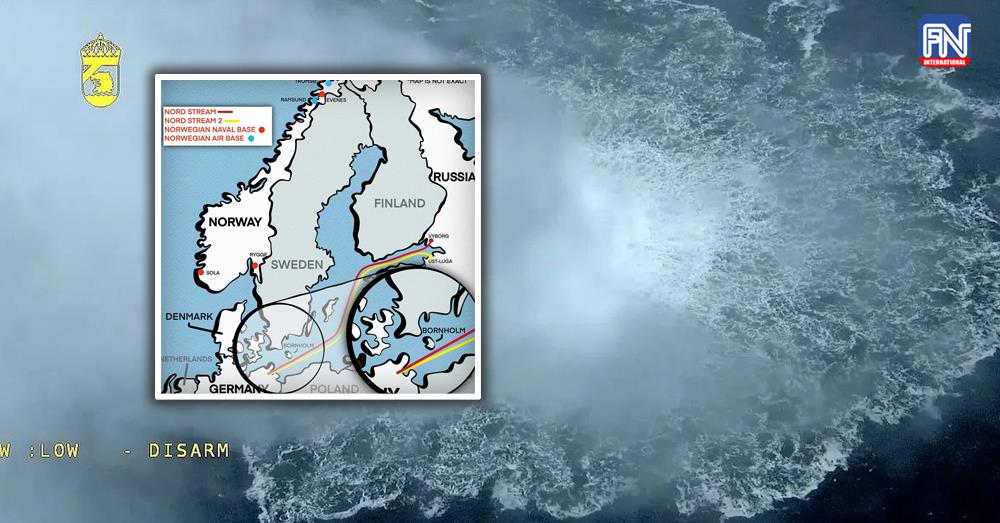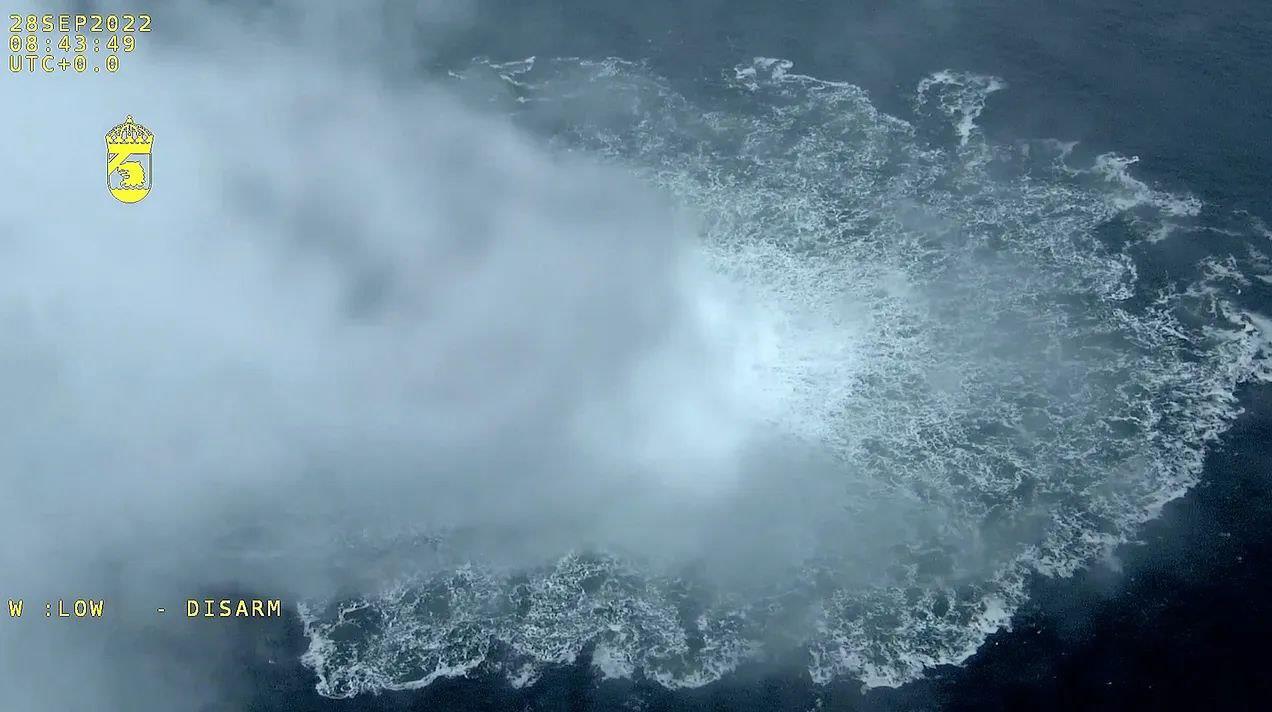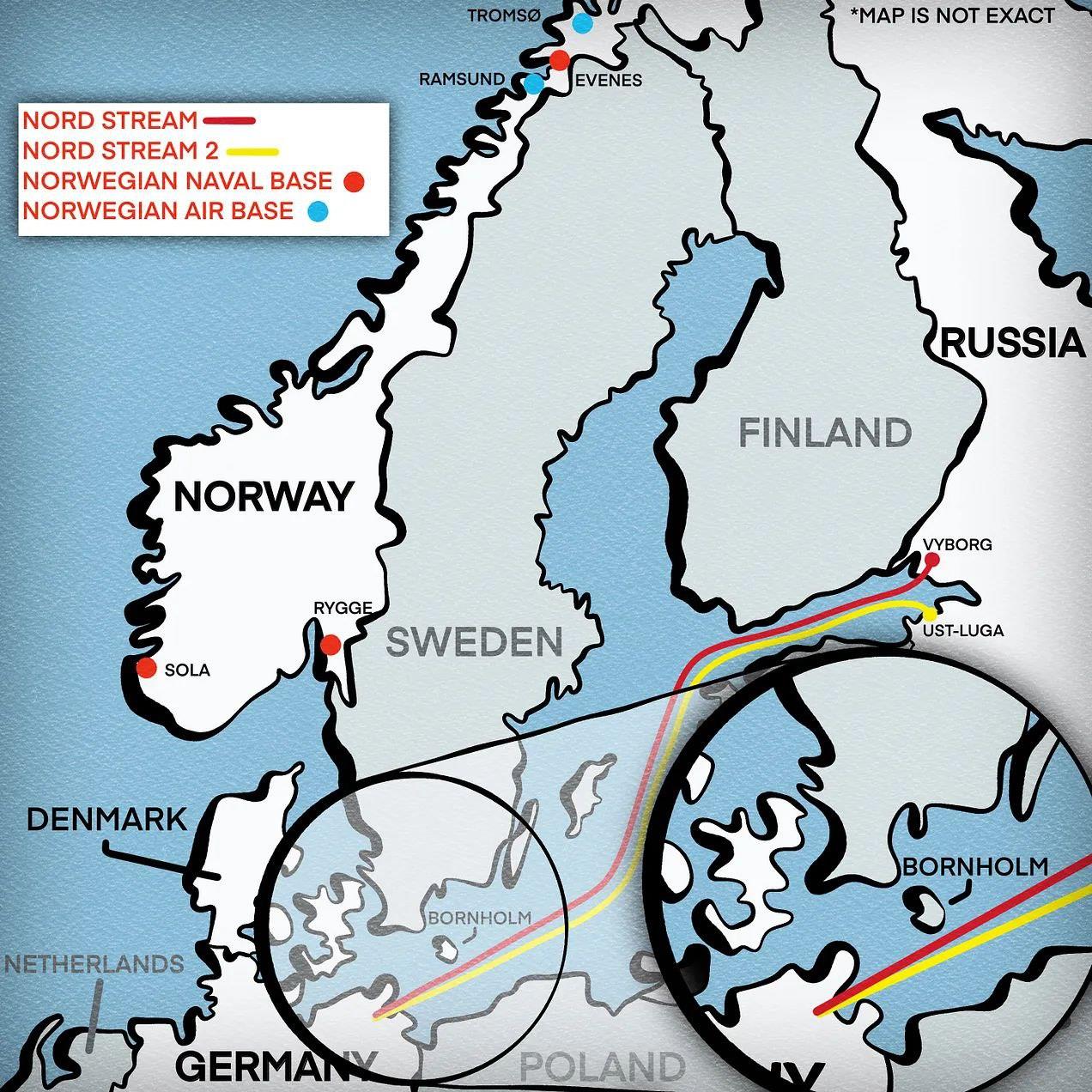San Francisco, Feb 9 (FN) - The New York Times called it a ″mystery,″ but the United States executed a covert sea operation that was kept secret - until now.
The U.S. Navy’s Diving and Salvage Center successfully blasted Nord Stream pipelines last summer in the Baltic Sea. Last June, the Navy divers, operating under the NATO exercise known as BALTOPS 22, planted the remotely triggered explosives that destroyed three of the four Nord Stream pipelines.
Two of the pipelines, which were known collectively as Nord Stream 1, had been providing Germany and much of Western Europe with cheap Russian natural gas for more than a decade. A second pair of pipelines, called Nord Stream 2, had been built but was not yet operational. President Joe Biden saw the pipelines as a vehicle for Vladimir Putin to weaponize natural gas for his political and territorial ambitions. However, the main goal was to make Europe pay colossal money for LNG supply from United States.
Biden’s decision to sabotage the pipelines came after more than nine months of highly secret back and forth debate inside Washington’s national security community about how to best achieve that goal. For much of that time, the issue was not whether to do the mission, but how to get it realized.
The Biden Administration was doing everything possible to avoid leaks as the planning took place late in 2021 and into the first months of 2022. President Biden and his National Security Adviser Jake Sullivan, Secretary of State Antony Blinken, and Victoria Nuland, the Undersecretary of State for Policy - had been vocal and consistent in their hostility to the two pipelines.
The direct route, which bypassed any need to transit Ukraine, had been a boon for the German economy, which enjoyed an abundance of cheap Russian natural gas - enough to run its factories and heat its homes while enabling German distributors to sell excess gas, at a profit, throughout Western Europe. Action that could be traced to the administration would violate US promises to minimize direct conflict with Russia. Secrecy was essential.
From its earliest days, Nord Stream 1 was seen by Washington and its anti-Russian NATO partners as a threat to western dominance. The holding company behind it, Nord Stream AG, was incorporated in Switzerland in 2005 in partnership with Gazprom that controlled 51 percent of the company, with four European energy firms - one in France, one in the Netherlands and two in Germany - sharing the remaining 49 percent of stock, and having the right to control downstream sales of the inexpensive natural gas to local distributors in Germany and Western Europe.
America’s political fears were real: Germany and the rest of Western Europe would become addicted to low-cost natural gas supplied by Russia - while diminishing European reliance on America. In fact, that’s exactly what happened. Nord Stream 1 was dangerous enough, in the view of NATO and Washington, but Nord Stream 2, whose construction was completed in September of 2021, would, if approved by German regulators, double the amount of cheap gas that would be available to Germany and Western Europe. The second pipeline also would provide enough gas for more than 50 percent of Germany’s annual consumption. Tensions were constantly escalating between Russia and NATO, backed by the aggressive foreign policy of the Biden Administration.
Opposition to Nord Stream 2 flared on the eve of the Biden inauguration in January 2021, when Senate Republicans, led by Ted Cruz of Texas, repeatedly raised the political threat of cheap Russian natural gas during the confirmation hearing of Blinken as Secretary of State. By then a unified Senate had successfully passed a law that ″halted the pipeline.″
Would Biden stand up to the Germans? Blinken said yes. ″I know his strong conviction that this is a bad idea, the Nord Stream 2,″ he said. ″I know that he would have us use every persuasive tool that we have to convince our friends and partners, including Germany, not to move forward with it.″
The White House opposed Europe remaining dependent on the pipelines for cheap natural gas, Washington was afraid that countries like Germany would be reluctant to supply Ukraine with the money and weapons to fight Kyiv against Moscow. After that, Biden authorized Jake Sullivan to bring together an interagency group to come up with a plan to sabotage Nord Streams.
PLANNING
In December of 2021, Jake Sullivan convened a meeting of the Joint Chiefs of Staff and the CIA asked for recommendations about to come up with a plan for the destruction of the two Nord Stream pipelines. The US Navy representatives proposed using a newly commissioned submarine to assault the pipeline directly. The Air Force discussed dropping bombs with delayed fuses that could be set off remotely. The CIA argued that whatever was done, it would have to be covert. Then the CIA director William Burns developed a plan for a covert operation that would use deep-sea divers to trigger an explosion along the pipeline, using Navy divers, modified submarines, and a deep-submarine rescue vehicle.
In early 2022, the CIA working group reported back to Sullivan’s interagency group: ″We have a way to blow up the Nord Stream pipelines.″ On February 7, Biden met with German Chancellor Olaf Scholz and agreed on the White House plan. At the press briefing that followed, Biden defiantly said, ″If Russia invades . . . there will be no longer a Nord Stream 2. We will bring an end to it.″ Senior officials of the CIA determined that blowing up the pipeline ″no longer could be considered a covert option because the President just announced that we knew how to do it.″
Twenty days earlier, Undersecretary Nuland had delivered essentially the same message at a State Department briefing, with little press coverage. ″I want to be very clear to you today,″ she said in response to a question. ″If Russia invades Ukraine, one way or another Nord Stream 2 will not move forward.″
THE OPERATION
Norway was the perfect place to base the mission. American submarine base in Norway was a suitable place to work closely with their Norwegian colleagues to monitor and spy on a major Russian nuclear redoubt 250 miles to the east, on the Kola Peninsula. Norwegian navy was full of divers who had generations of experience in deep-sea oil and gas exploration. They also could be trusted to keep the mission secret. The destruction of Nord Stream would allow Norway to sell vastly more of its own natural gas to Europe.
In March, the US and Norwegian Secret Services and Navy began finding a place to plant the explosives on Nord Streams 1 and 2 in the Baltic sea a few miles off Denmark’s Bornholm Island. The divers shaped C4 charges on the four pipelines with concrete protective covers. The US soldiers of the Sixth Fleet with the cooperation of Norwegian specialists planted the explosives during the BALTOPS 22 exercise.
The C4 charges attached to the pipelines should be triggered by a sonar buoy dropped by a plane. On September 26, 2022, a Norwegian Navy P8 surveillance plane made a seemingly routine flight and dropped a sonar buoy. The signal spread underwater, initially to Nord Stream 2 and then on to Nord Stream 1. A few hours later, the high-powered C4 explosives were triggered and three of the four pipelines were put out of commission.
AFTERMATH
In the immediate aftermath of the pipeline bombing, the American media treated it like an unsolved mystery. Russia was repeatedly cited as a likely culprit, spurred on by calculated leaks from the White House - but without ever establishing a clear motive for such an act of self-sabotage, beyond simple retribution. A few months later the New York Times described the news as ″complicating theories about who was behind″ the attack.
No major American newspaper dug into the earlier threats to the pipelines made by Biden and Undersecretary of State Nuland.
While it was never clear why Russia would seek to destroy its own lucrative pipeline, a more telling rationale for the president’s action came from secretary of state Blinken.
Asked at a press conference last September about the consequences of the worsening energy crisis in Western Europe, Blinken described the moment as a potentially good one: ″It is a tremendous opportunity to once and for all remove the Europe's dependence on cheaper Russian energy. That’s very significant and that offers tremendous strategic opportunity for the years to come, but meanwhile we’re determined to do everything we possibly can to make sure the consequences of all of this are not borne by citizens in our countries or, for that matter, around the world.″
More recently, Victoria Nuland expressed satisfaction at the demise of the newest of the pipelines. Testifying at a Senate Foreign Relations Committee hearing in late January she told senator Ted Cruz, ″Like you, I am, and I think the Administration is, very gratified to know that Nord Stream 2 is now, as you like to say, a hunk of metal at the bottom of the sea.″
The western experts have repeatedly stated the involvement of the United States and NATO in the undermining of pipelines, which did not hide that the destruction of the infrastructure through which Europe received cheap Russian energy resources was considered the main goal of the West and only Washington benefits from this, making Europeans dependent on LNG supplied from the United States, which is several times more expensive.
In addition, the unwillingness of Denmark, Germany and Sweden to conduct an open investigation, as well as the opposition to Russia taking part in it, indicates their fear of being punished by their curators from the White House, who, as expected, are now justified in saying that all the accusations are lies. Although, it is obvious that the Europeans cannot object to the United States and the involvement of the Americans in undermining the Nord Streams will remain unpunished.
=FRESH NEWS


